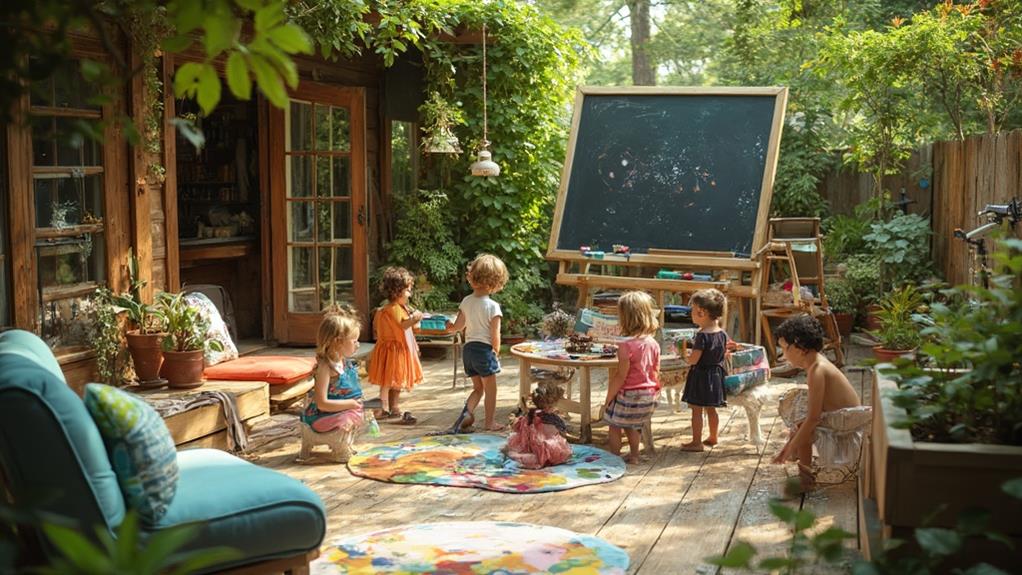Transforming your backyard into an educational outdoor learning space can significantly enhance children's cognitive, physical, and emotional development. Key elements include nature-based learning stations, sensory experiences, STEM-focused areas, eco-friendly art spaces, weather observation zones, and outdoor reading nooks. Incorporate diverse, hands-on activities that engage multiple senses and promote exploration. Create dedicated areas for gardening, water play, wildlife observation, and construction projects. Use natural and recycled materials to foster environmental awareness. Install weather monitoring equipment and provide tools for scientific inquiry. By thoughtfully designing these spaces, you can create a rich, multifaceted learning environment right in your own backyard. The following sections offer deeper insights into each component.
Designing Nature-Based Learning Stations
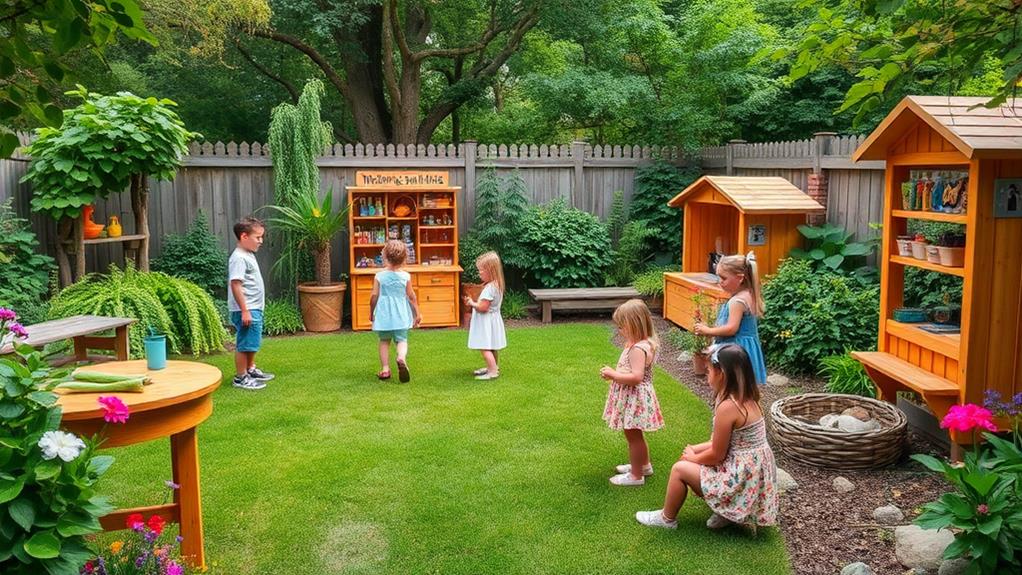
Creativity flourishes in well-designed outdoor learning spaces. When designing nature-based learning stations, focus on creating diverse, hands-on experiences that engage children's senses and promote exploration. Start by identifying different zones within your backyard, such as a gardening area, a water play station, and a wildlife observation spot.
For the gardening station, incorporate raised beds or container gardens with various plants, herbs, and vegetables. Include child-sized tools and a compost bin to teach sustainable practices. The water play area can feature a shallow pond, water table, or rain barrels to demonstrate water cycles and aquatic ecosystems. For wildlife observation, install bird feeders, butterfly gardens, and insect hotels to attract local fauna.
Integrate natural materials like logs, stones, and tree stumps to create seating areas and balance beams. Add a weather station with simple instruments to track temperature, wind, and precipitation. Create a sensory path using different textures such as sand, pebbles, and bark chips. Finally, designate a quiet reflection space with comfortable seating and nature journals for children to record their observations and experiences.
Crafting Outdoor Sensory Experiences
Engaging all five senses in outdoor learning spaces can significantly enhance children's cognitive development and connection with nature. To craft effective outdoor sensory experiences, incorporate a variety of textures, scents, sounds, tastes, and visual elements throughout the backyard space.
Create tactile stations with different materials like sand, pebbles, bark, and moss for children to explore through touch. Introduce aromatic plants such as lavender, mint, and rosemary to stimulate the sense of smell. Incorporate auditory elements by installing wind chimes, hanging bird feeders to attract songbirds, or creating a small water feature for soothing sounds.
For taste experiences, establish an edible garden with herbs, vegetables, and fruit-bearing plants that children can sample. Enhance visual stimulation by incorporating vibrant flowers, colorful art installations, and varying levels of vegetation. Consider adding magnifying glasses or microscopes for closer examination of natural elements.
Ensure accessibility for all children by providing raised garden beds, sensory paths, and interactive stations at different heights. Rotate sensory materials seasonally to maintain interest and reflect natural changes in the environment, promoting ongoing engagement and learning opportunities.
Incorporating STEM Elements
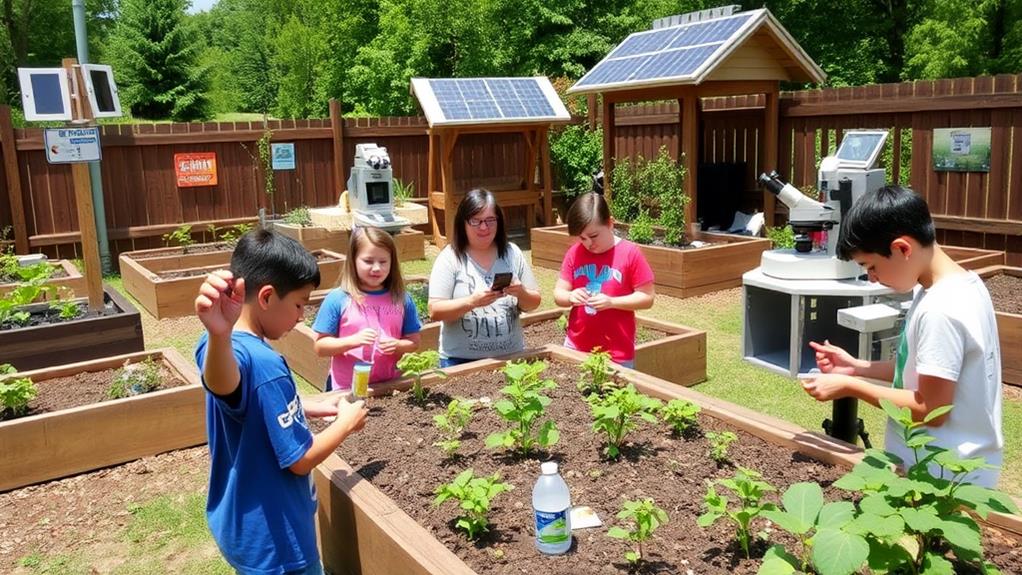
STEM education can be seamlessly integrated into outdoor learning backyard spaces, providing hands-on opportunities for children to explore science, technology, engineering, and mathematics in a natural setting. To incorporate STEM elements, consider installing a weather station with instruments to measure temperature, wind speed, and rainfall. This allows children to collect and analyze data, fostering scientific inquiry and mathematical skills.
Create an engineering zone with building materials like blocks, pipes, and recycled items for constructing structures and simple machines. Include a pulley system or a basic water pump to demonstrate mechanical principles. Designate an area for gardening, where children can learn about plant biology, soil composition, and sustainable practices.
Incorporate technology by setting up a solar-powered charging station for devices used in outdoor experiments or observations. Install informational QR codes throughout the space, linking to educational content about local flora, fauna, and geological features. Finally, design a math-focused area with geometric shapes, measurement tools, and number-based games integrated into the landscape. These STEM elements will transform the backyard into an interactive learning laboratory, encouraging exploration and critical thinking.
Creating Eco-Friendly Art Spaces
Outdoor learning spaces offer an ideal environment for fostering artistic expression while promoting environmental awareness. Creating eco-friendly art spaces in backyard learning areas allows students to engage with nature while developing their creativity and understanding of sustainable practices.
To establish an eco-friendly art space, incorporate natural and recycled materials. Use reclaimed wood for workbenches, easels, and storage units. Install rain barrels to collect water for cleaning brushes and tools. Provide bins for sorting recyclable materials that can be repurposed into art projects. Designate areas for composting organic waste from art activities.
Integrate native plants and flowers to inspire nature-based art and teach about local ecosystems. Create a sensory garden with various textures, colors, and scents to stimulate artistic ideas. Set up outdoor drying racks for paintings and sculptures that utilize solar energy. Implement a system for responsibly disposing of art supplies and minimizing chemical use.
Encourage the use of natural pigments derived from plants, berries, and minerals. Teach students about sustainable art practices, such as creating ephemeral land art installations that naturally decompose over time. By combining artistic expression with environmental stewardship, these spaces nurture creativity while instilling ecological values.
Developing Weather Observation Areas
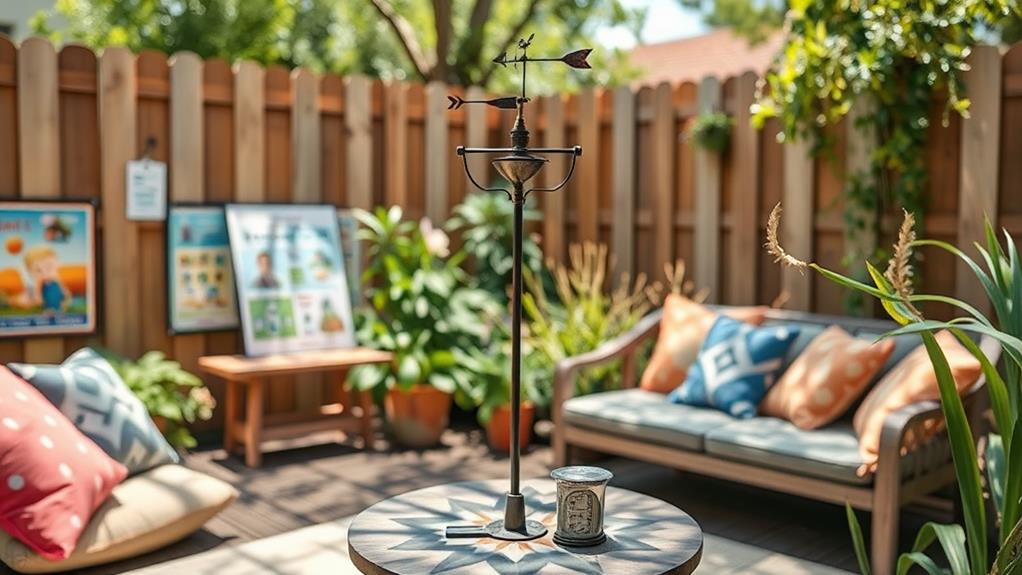
To complement outdoor learning spaces, weather observation areas provide students with hands-on opportunities to study meteorology and climate patterns. These dedicated zones can be equipped with various instruments to measure and record atmospheric conditions. Essential tools include a thermometer for temperature readings, a rain gauge to measure precipitation, and an anemometer to determine wind speed and direction. A barometer for tracking air pressure and a hygrometer for measuring humidity levels can also be incorporated.
Installing a weather station with digital sensors and data logging capabilities allows for continuous monitoring and analysis of local weather trends. Students can learn to interpret this data and make predictions based on their observations. A sundial or shadow stick can be used to track the sun's movement and teach concepts of time and seasonal changes. Creating a cloud identification chart nearby encourages students to observe and classify different cloud types. Additionally, setting up a small greenhouse or cold frame within the observation area enables students to study the effects of weather on plant growth. These hands-on experiences foster scientific inquiry skills and deepen understanding of environmental sciences.
Building Reading Nooks Outdoors
Creating inviting outdoor reading spaces enhances the learning environment by providing students with comfortable areas to engage with literature amidst nature. These outdoor reading nooks can be designed to accommodate individual readers or small groups, offering a serene setting that encourages focus and imagination.
When building outdoor reading nooks, consider incorporating weather-resistant seating options such as wooden benches, oversized cushions, or hammocks. Ensure adequate shade by utilizing existing trees or installing pergolas with climbing plants. Incorporate bookshelves or weatherproof storage solutions to house a rotating selection of books and reading materials.
To maximize comfort and usability, install proper lighting for evening reading sessions and consider adding retractable awnings or umbrellas for sun protection. Integrate natural elements like rock gardens or water features to create a calming atmosphere. Consider including small writing surfaces or clipboards for note-taking and journaling activities.
Lastly, make the space accessible for all students by incorporating inclusive design elements such as wide pathways and adjustable seating options. By thoughtfully designing outdoor reading nooks, educators can create inspiring spaces that foster a love for reading and connection with nature.
Cultivating Edible Gardens
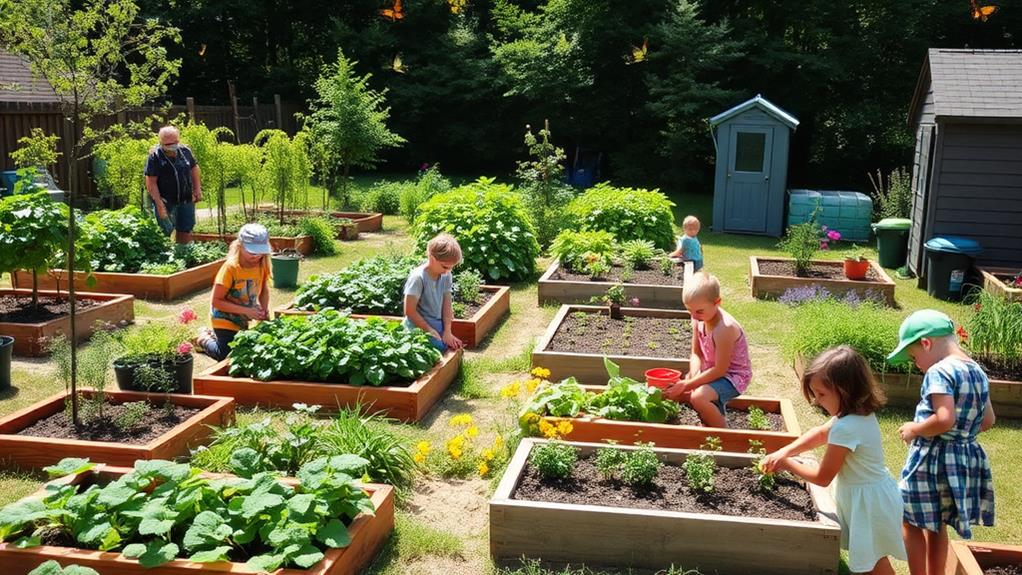
Within the realm of outdoor learning spaces, cultivating edible gardens offers a unique and engaging educational opportunity. These gardens provide hands-on experiences in botany, nutrition, and environmental science while fostering a connection to nature and food sources.
To create an effective edible garden, start by selecting a sunny location with well-draining soil. Choose a variety of plants suitable for your climate, including vegetables, fruits, and herbs. Incorporate raised beds or container gardens to maximize space and improve accessibility for students of all ages.
Implement a compost system to teach about soil health and waste reduction. Include a rainwater collection system to demonstrate water conservation techniques. Integrate pollinator-friendly plants to illustrate ecosystem interdependence.
Organize the garden into themed sections, such as a salsa garden or a pizza garden, to make learning more engaging and relatable. Install informational signage to provide plant identification and care instructions. Create a dedicated area for garden tools and supplies, ensuring proper storage and safety.
Frequently Asked Questions
How Much Does It Typically Cost to Renovate a Backyard for Outdoor Learning?
The cost to renovate a backyard for outdoor learning typically ranges from $5,000 to $50,000, depending on factors such as size, materials, features, and complexity. Simple setups may cost less, while elaborate designs can exceed this range.
What Safety Measures Should Be Implemented in an Outdoor Educational Space?
Safety measures for outdoor educational spaces should include secure fencing, proper lighting, non-toxic plants, soft ground surfaces, weather protection, clear sightlines for supervision, first aid supplies, and adequate shade to prevent sun exposure.
How Can Outdoor Learning Spaces Accommodate Children With Special Needs or Disabilities?
Outdoor learning spaces can accommodate children with special needs or disabilities by incorporating accessible pathways, sensory-friendly areas, adaptive equipment, and inclusive design features. Providing diverse learning stations and flexible seating options ensures equal participation and engagement for all students.
Are There Any Legal Considerations or Permits Required for Backyard Educational Renovations?
Legal considerations for backyard educational renovations? Absolutely. Check local zoning laws, building codes, and permit requirements. Safety regulations may apply, especially for structures or play equipment. Consult with your local authorities to ensure compliance before starting any renovations.
How Can Outdoor Learning Spaces Be Maintained During Harsh Weather Conditions?
To maintain outdoor learning spaces in harsh weather, implement sturdy, weather-resistant materials, install proper drainage systems, use protective coverings, and conduct regular maintenance. Consider creating sheltered areas and implementing seasonal adaptations to ensure year-round functionality and safety.
Conclusion
Transforming outdoor spaces into educational environments offers numerous benefits for learners of all ages. Research indicates that children who engage in regular outdoor learning experiences demonstrate improved cognitive function, increased physical activity, and enhanced social skills. According to a study published in Frontiers in Psychology, students participating in outdoor education programs showed a 27% increase in academic performance compared to their peers. By implementing these backyard renovations, educators and parents can create dynamic, nature-based learning opportunities that foster holistic development and environmental stewardship.
